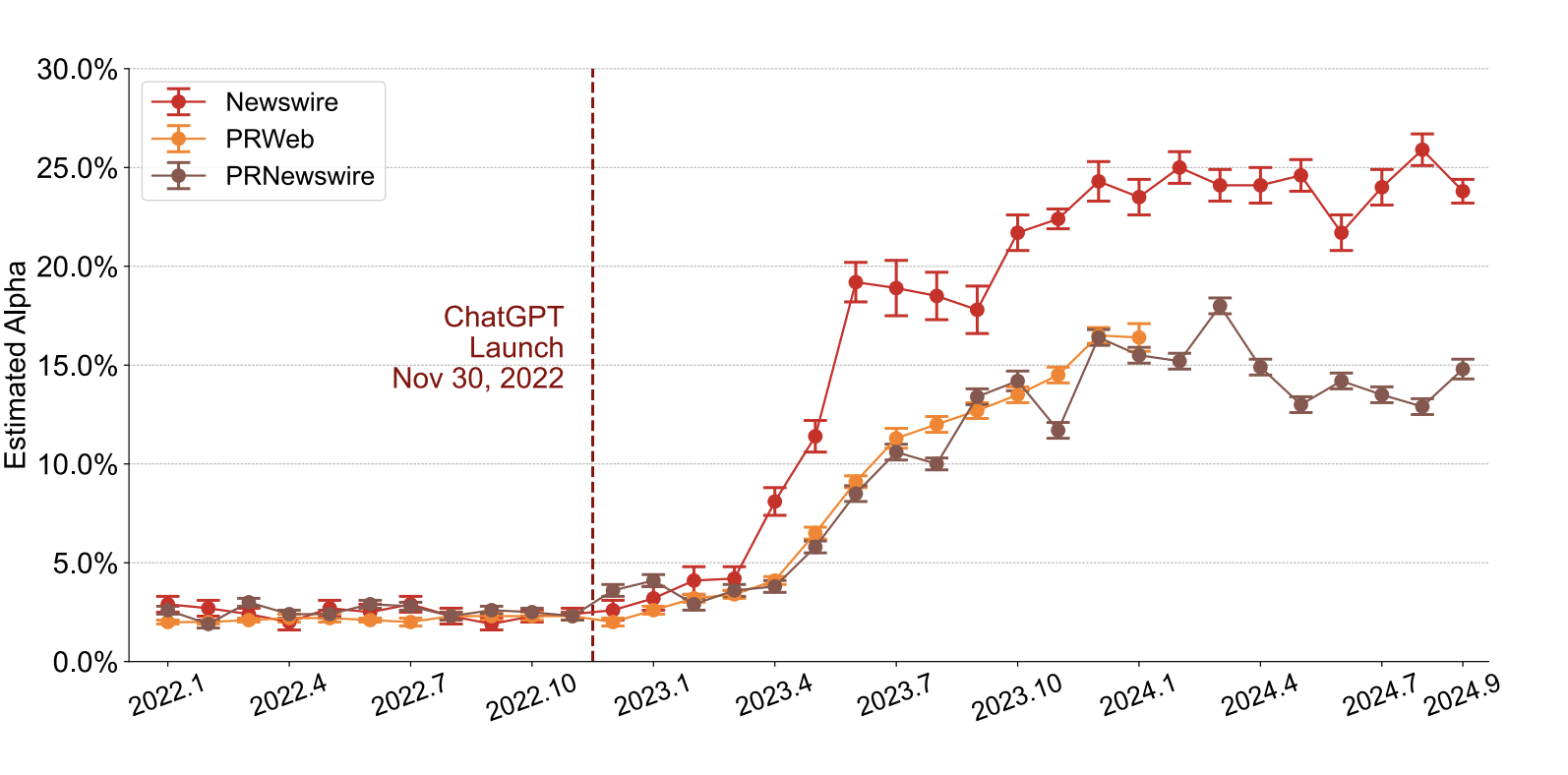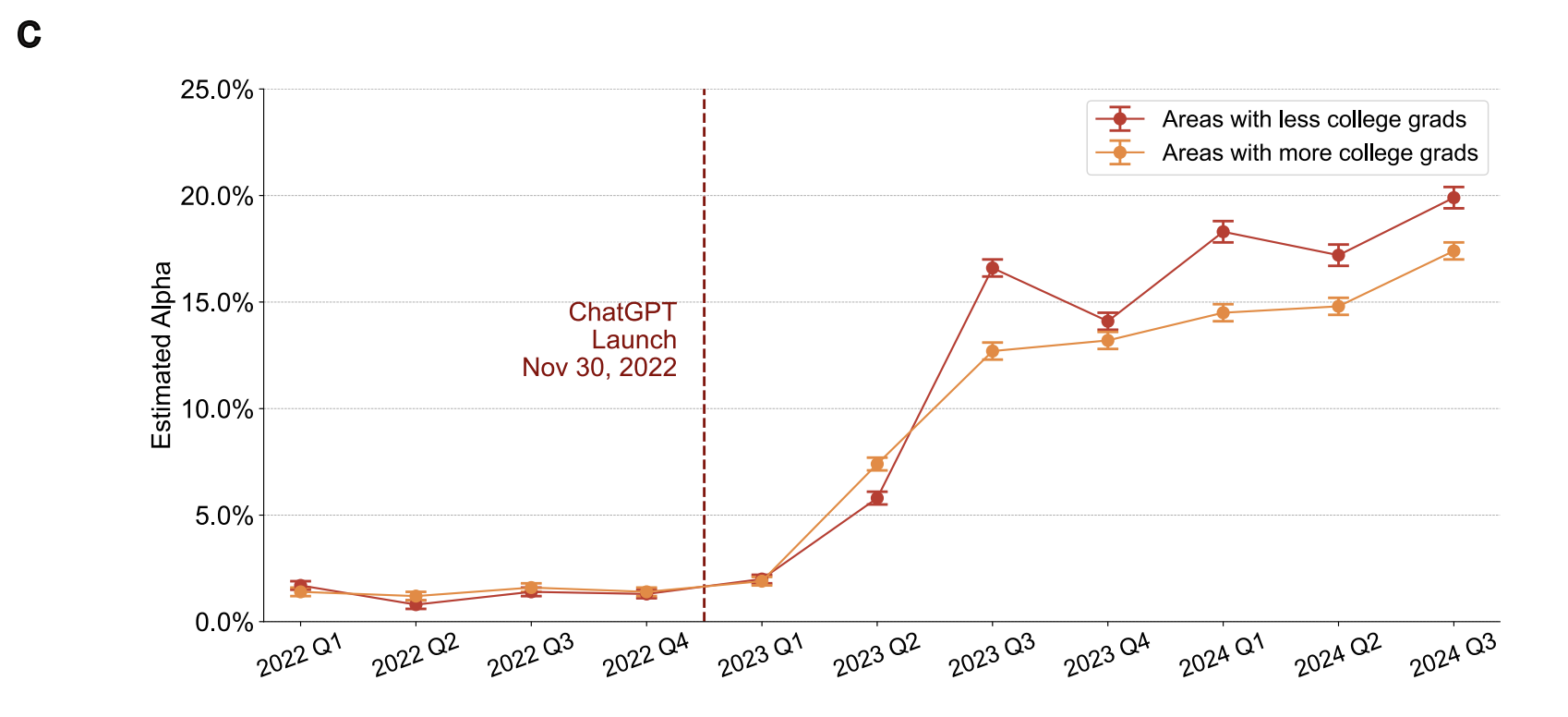
- Apr 24, 2025
- 5 minutes
-
 Stephanie Vanden-Berghe
Stephanie Vanden-Berghe
Since its release in November 2022, ChatGPT has accelerated the widespread adoption of large language models (LLMs) across various sectors. What began as a novelty quickly turned into a powerful writing assistant, and within six months, its impact became impossible to ignore. But just how much of today’s content is created with the help of AI?
A recent large-scale study conducted by researchers from Stanford University, the University of Washington, and Emory University, Atlanta, between January 2022 and November 2024, examined LLM-assisted writing in four domains—consumer complaints, corporate communication, job postings, and international organization press releases. The study analyzed millions of datasets across these domains, nearly a year before and a year and a half after the launch of ChatGPT. The findings reveal intriguing patterns in usage.
The share of AI-assisted content varied considerably between the domains. Corporate communication and press releases peaked at over 25%, followed by consumer complaints at approximately 18%. International press releases reached almost 15%, while job postings showed around 10% AI involvement, most commonly among small and young firms, which appear to adopt generative tools more readily for drafting and refining job descriptions.
Zooming in on consumer complaints, the study takes a deep dive into how AI adoption evolved over time in this specific domain and how that growth intersected with factors such as geographic location, demographics, and educational level.
Before ChatGPT’s launch, the rate of AI-assisted writing was relatively low and stable, hovering around 2% across all the analyzed domains, as shown in Figure 1. That figure began to climb slowly in the six months following the launch. Starting mid-2023, a clear and sharp increase occurred. By the third quarter of 2023, AI-assisted content creation had surged to approximately 15%.
Interestingly, in the early months after ChatGPT became publicly available, there was little difference in adoption between urban and rural areas. However, six months post-launch, usage began to diverge. Urbanized regions began adopting generative AI tools faster than less populated areas.

Figure 1: Usage by area
The most surprising trend, as shown in Figure 2, relates to educational background. Historically, new technology is typically adopted first by those with higher levels of formal education. However, in the case of ChatGPT and similar tools, the opposite trend emerged. One year after the launch, the share of AI-assisted content produced by individuals with less formal education had jumped to nearly 20%, overtaking usage among more educated populations.

Figure 2: Usage by educational level
The researchers suggest that this shift is primarily driven by younger and less experienced workers, who are more open to experimenting with AI to enhance productivity and communication. This challenges the standard narrative that generative AI primarily benefits highly educated people or those in tech-heavy industries. Instead, it suggests that tools like ChatGPT may be acting as social equalizers, empowering those who traditionally had less access to high-level writing or communication support.
In short, generative AI is no longer just a novelty or niche productivity booster. It’s becoming deeply embedded in how we write, communicate, and work.
As this technology continues to evolve, one thing is clear: understanding these shifting adoption patterns will be crucial for businesses, educators, and policymakers alike.
Source:
‘The Widespread Adoption of Large Language Model-Assisted Writing Across Society’, Liang, W., Zhang, Y., Codreanu, M., Wang, J., Cao, H., Zou, J., https://arxiv.org/pdf/2502.09747